Abstract
Light-traps have been used successfully as mechanical sampling tools for insects of agricultural importance but medical entomologists have had only limited success because of the assumption that light-traps would attract vectors, even when sited in open fields well away from hosts. The investigations reported in this paper suggest that vectors are attracted primarily by their hosts and that only when light-traps are placed in the immediate vicinity of hosts, or in the narrow flight paths followed by host-seeking females, are appreciable numbers caught.
When the CDC miniature light-trap was placed at various distances from hosts, the number of anopheline and culicine species captured decreased as the distance from the host increased. There were statistically significant differences between the means of catches in light-traps suspended on or in human dwellings, placed inside village compounds, and placed near the breeding site about 1.6 km from the nearest house. The maximum catch of Anopheles gambiae s.l. and culicines exceeded 3000 and 7000 per trap per night, respectively, and the average was in excess of 1200 A. gambiae s.l.
The investigations showed that 6 anopheline species could be caught in appreciable numbers in human dwellings and thus demonstrated that light-traps could be used for sampling both endophilic and exophilic anophelines. It also appears that the effective range of the CDC miniature light-trap is about 5 m.
Full text
PDF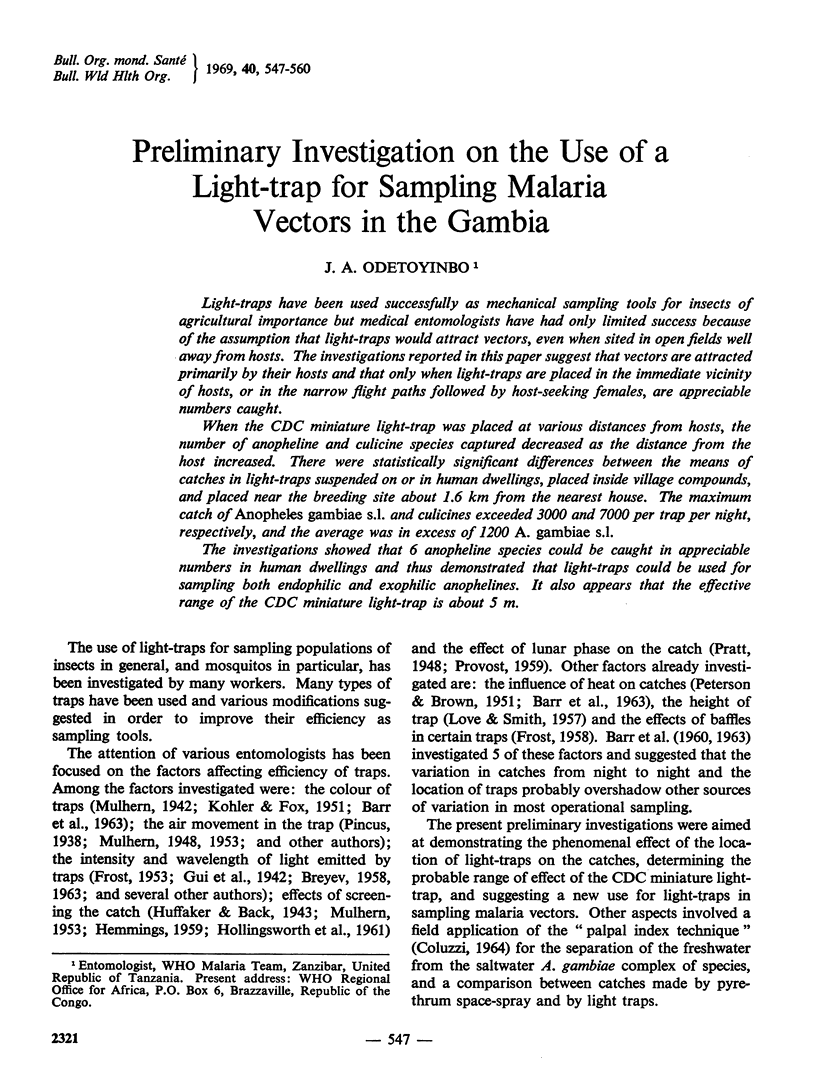
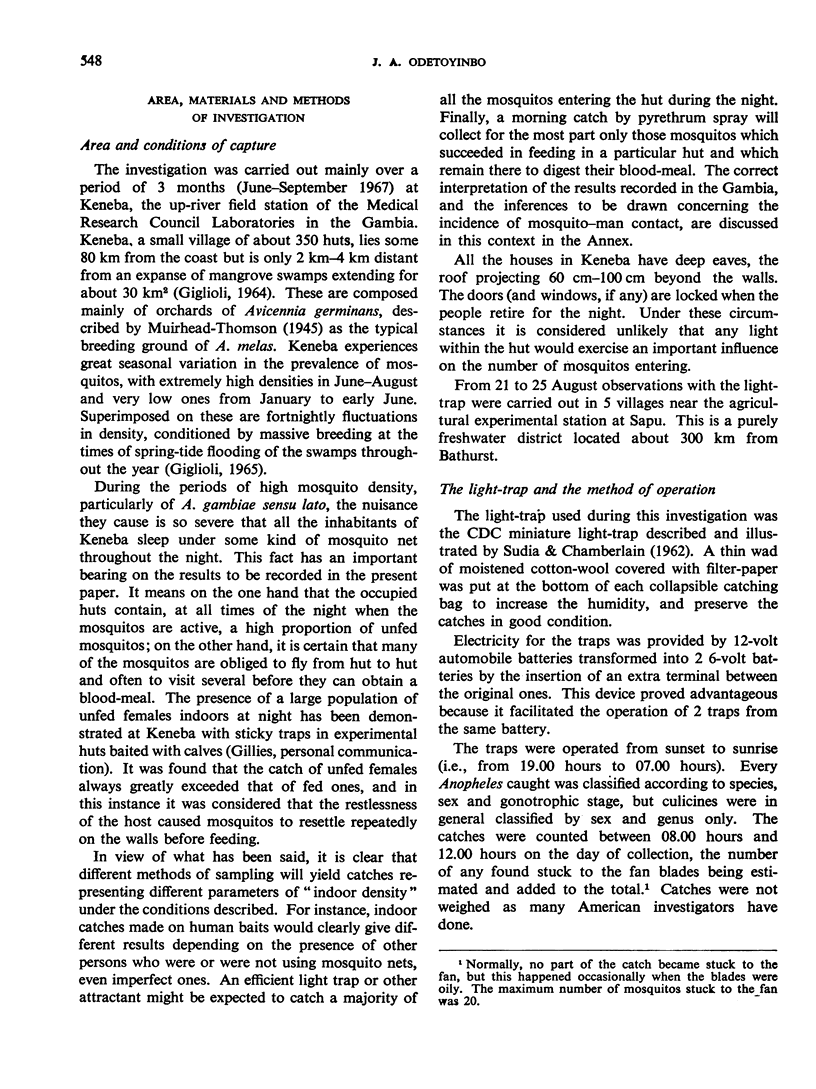
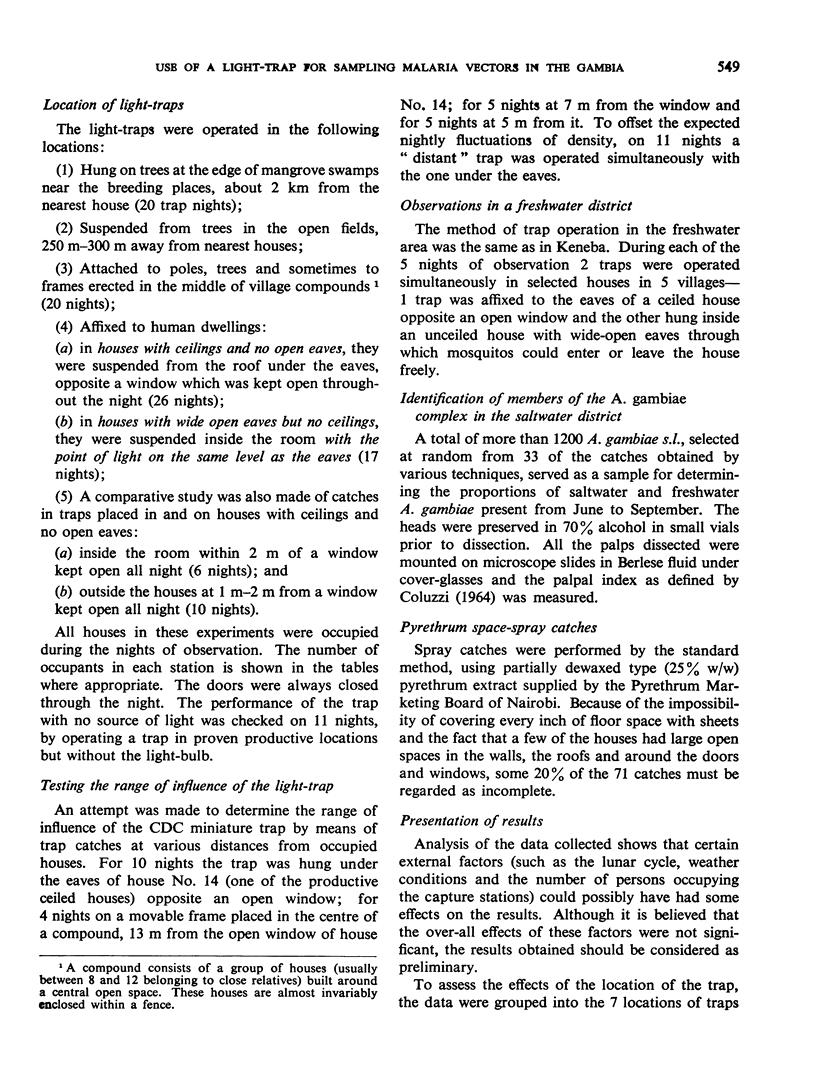
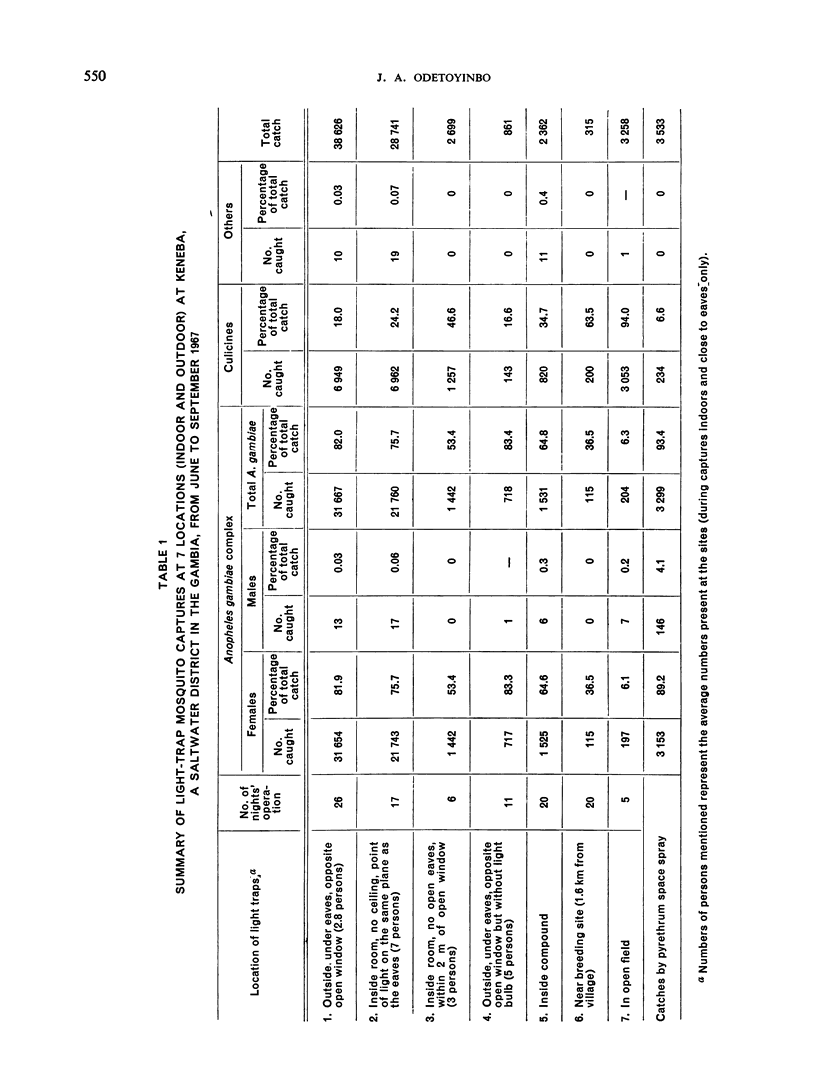
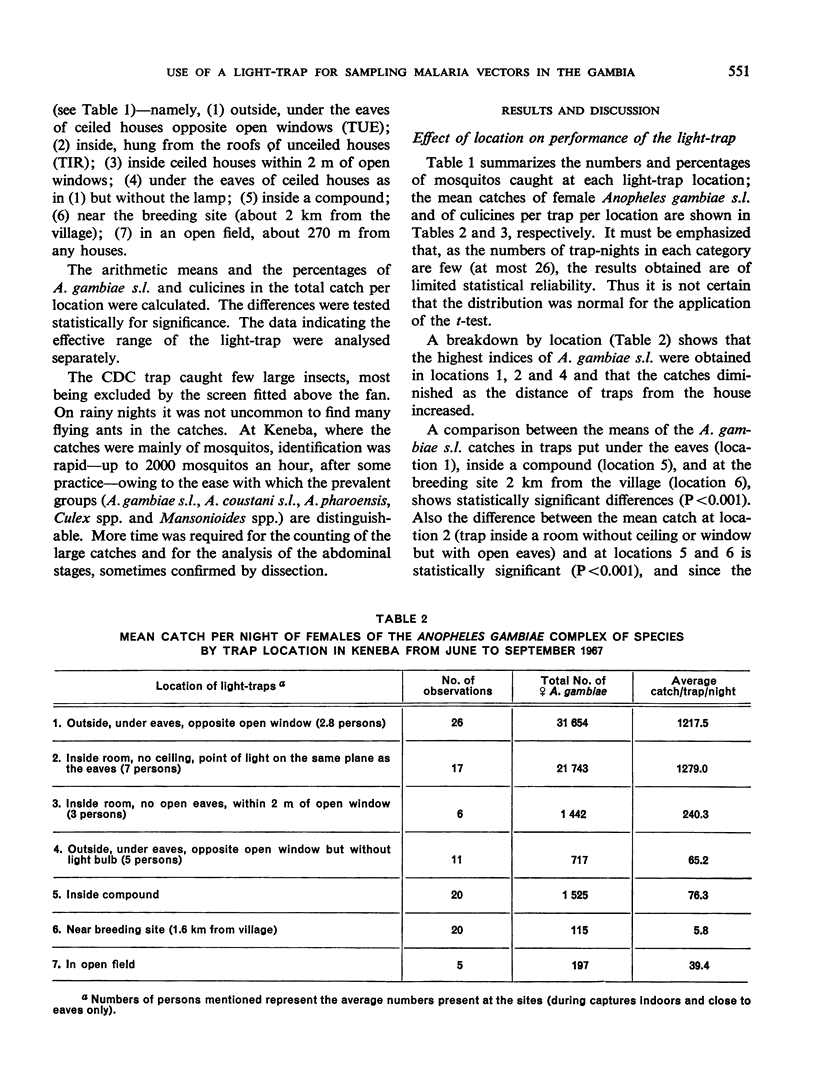
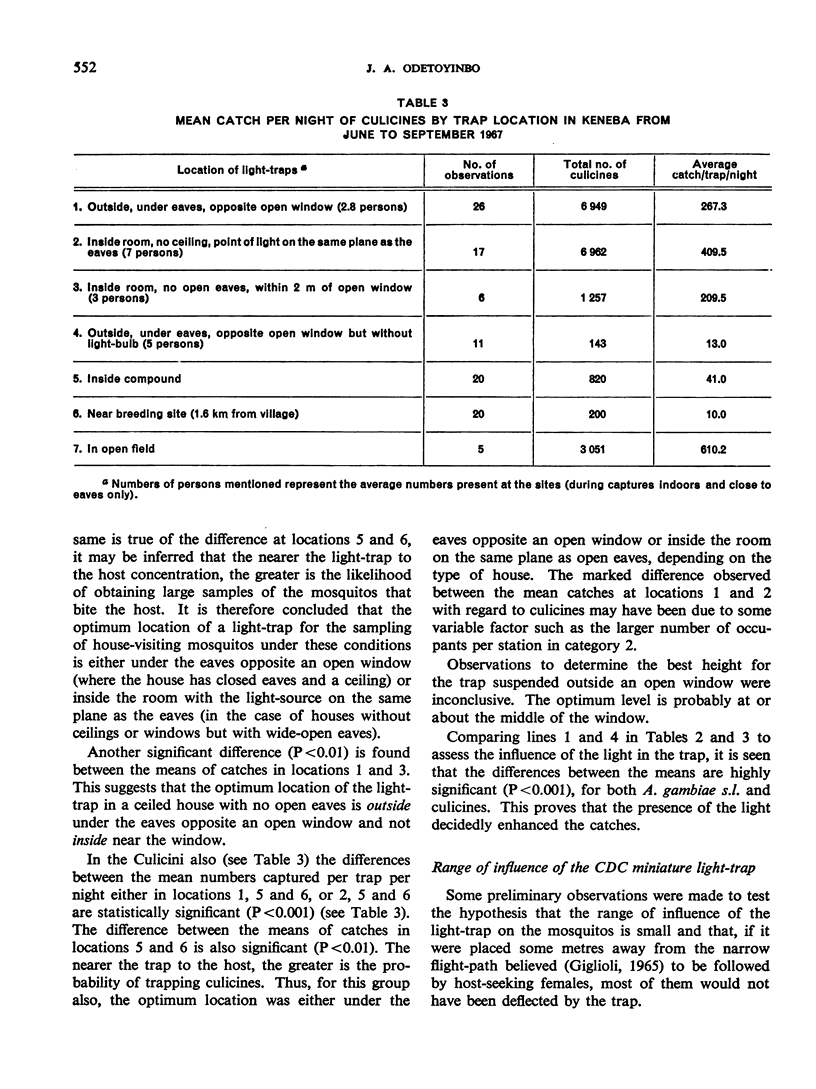
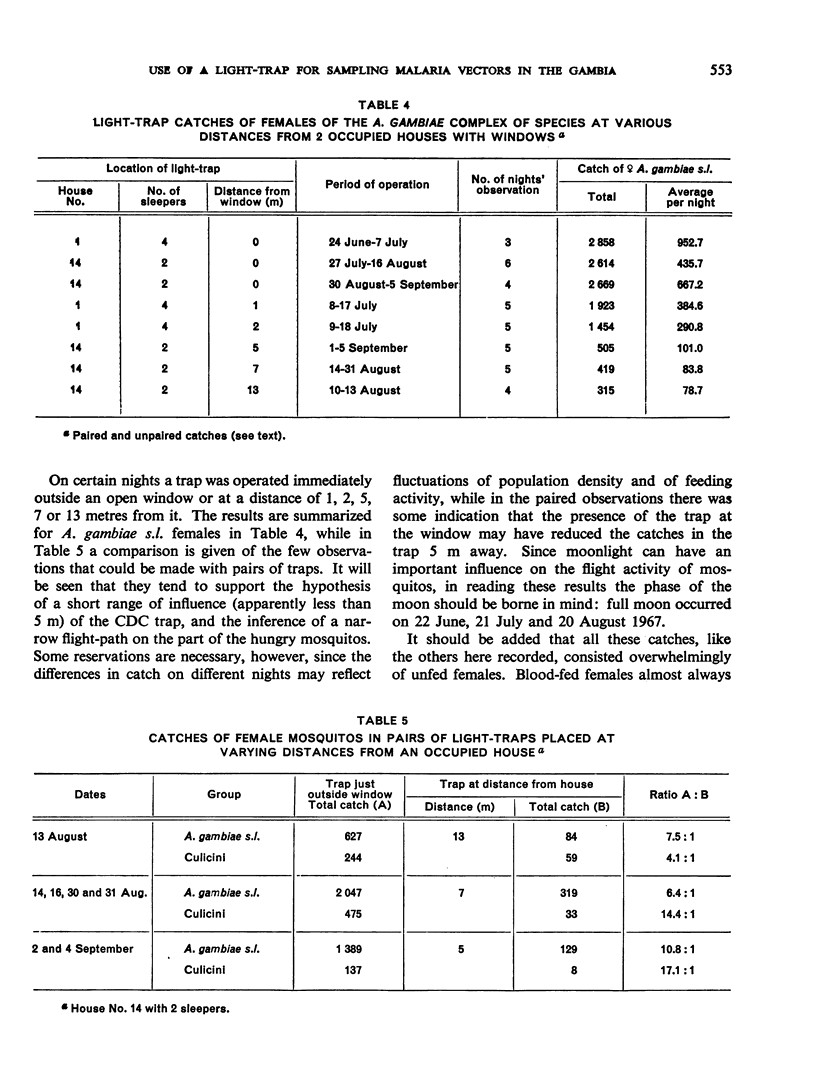
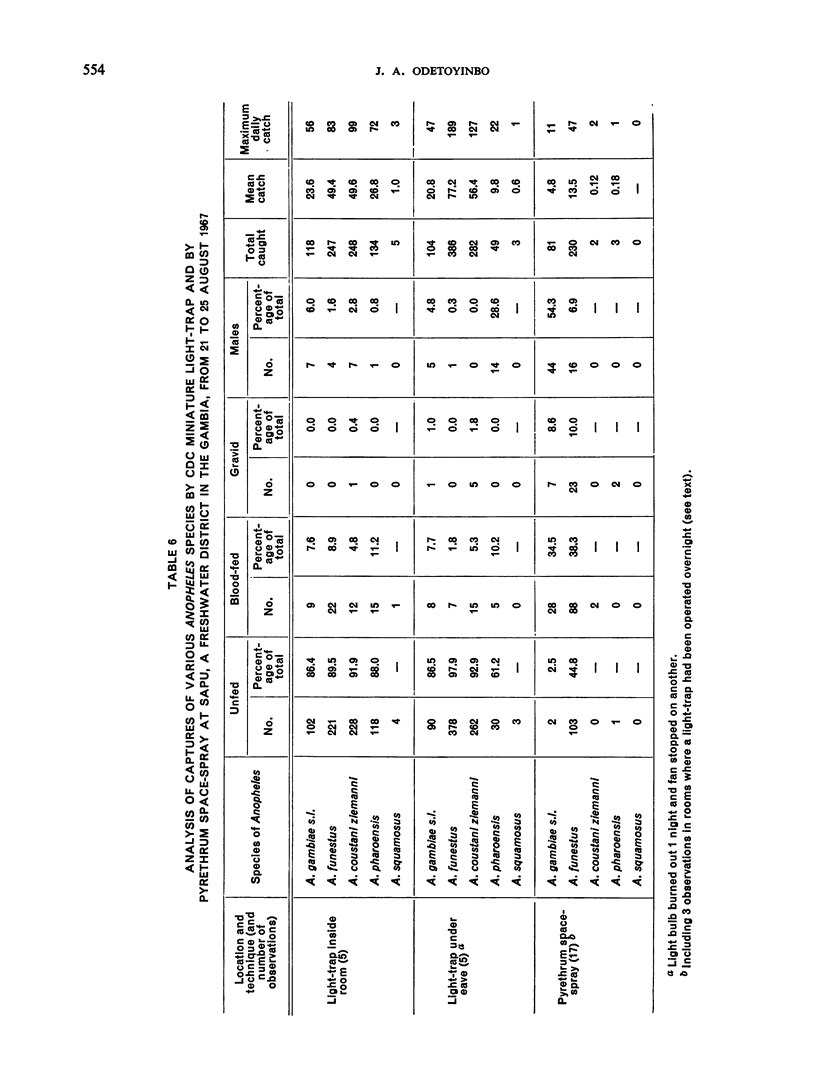
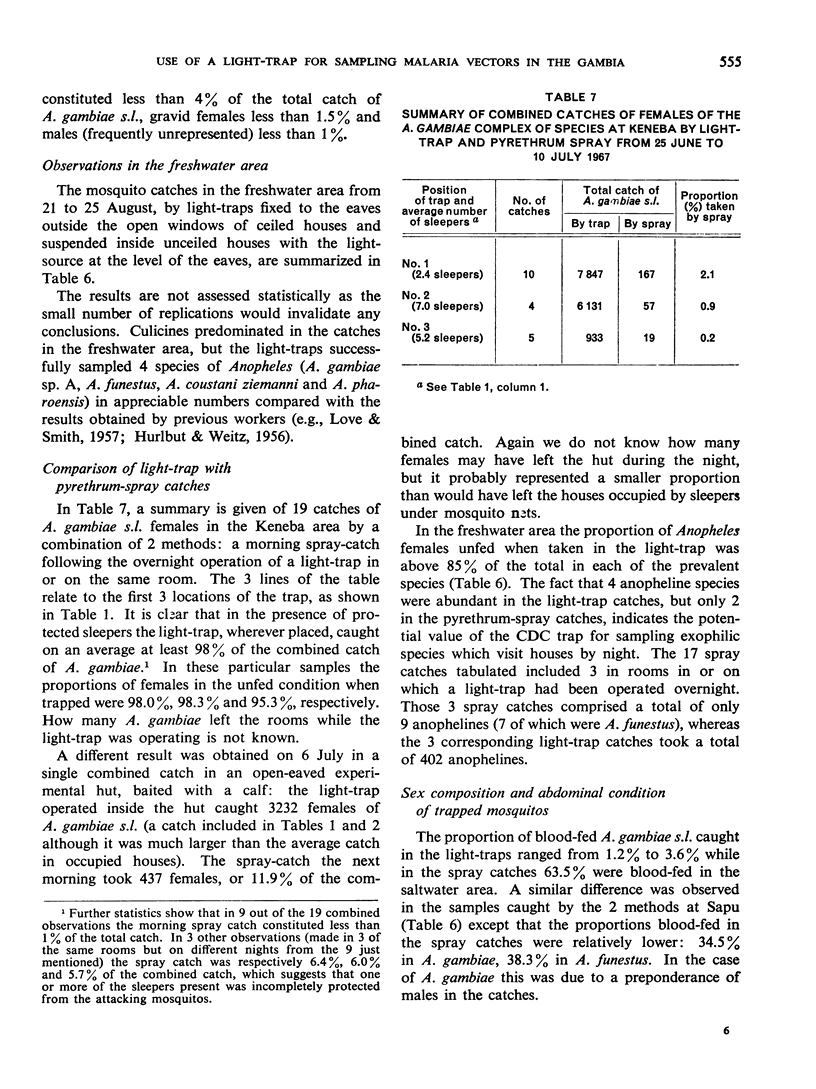
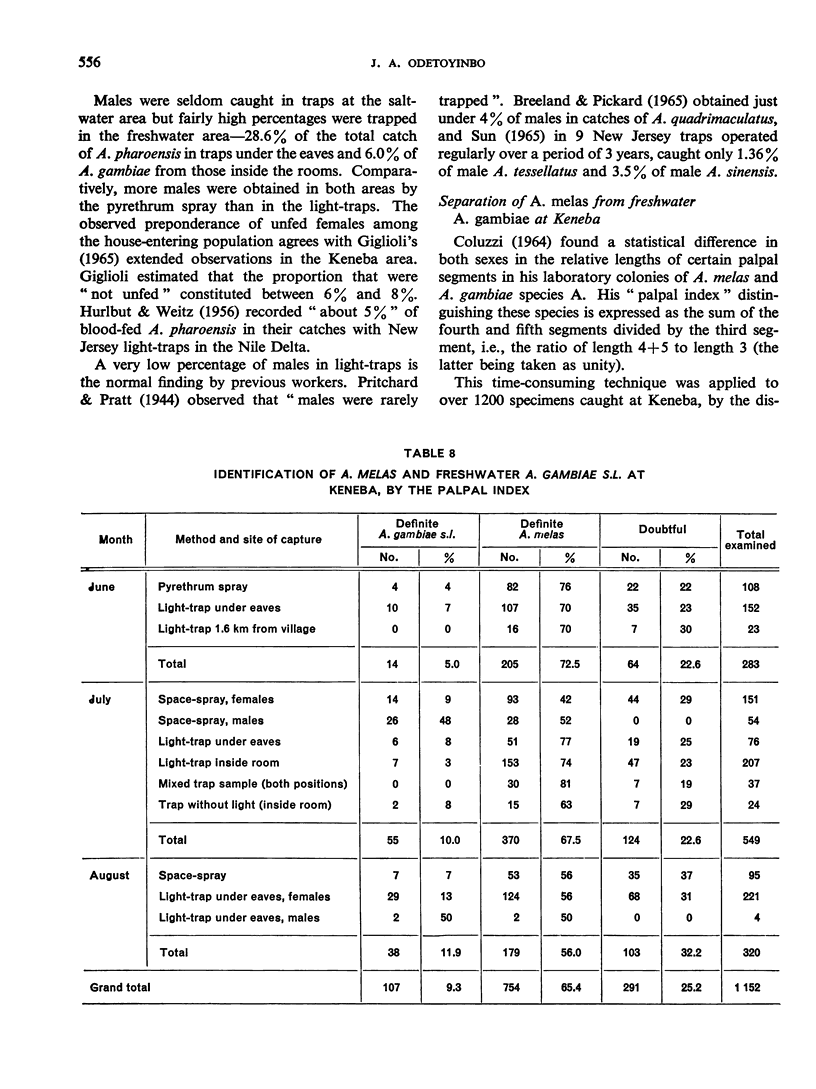
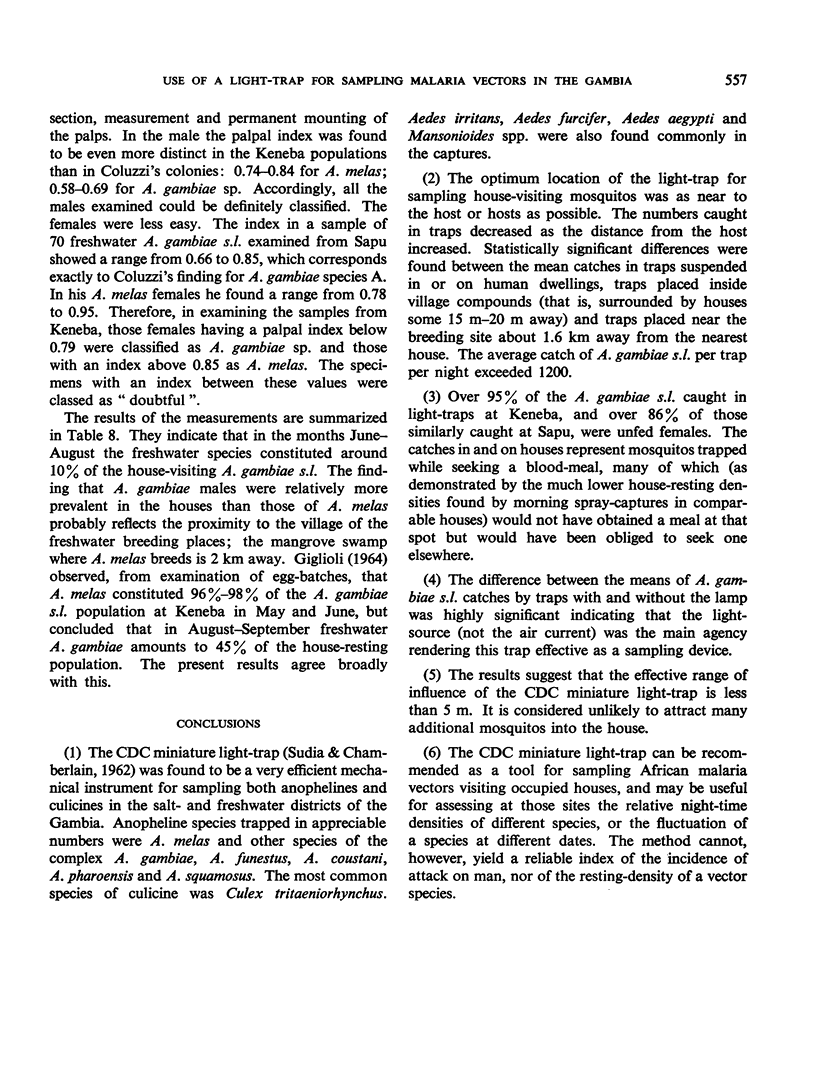
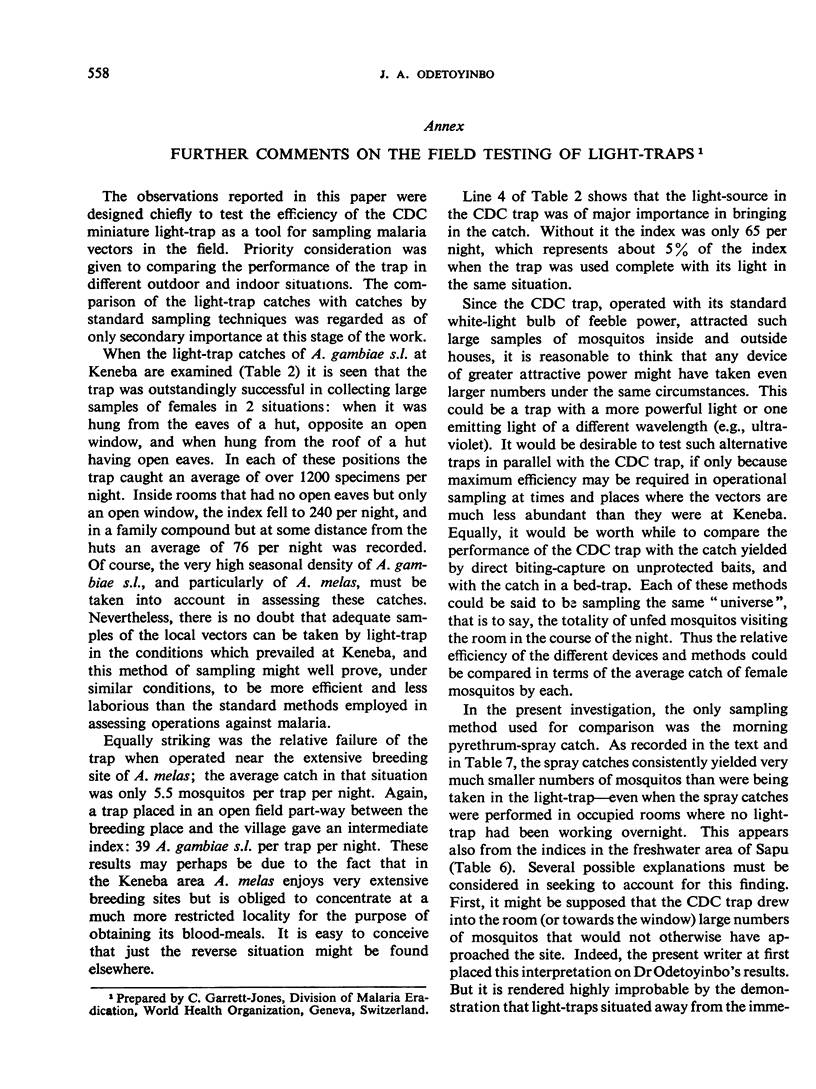
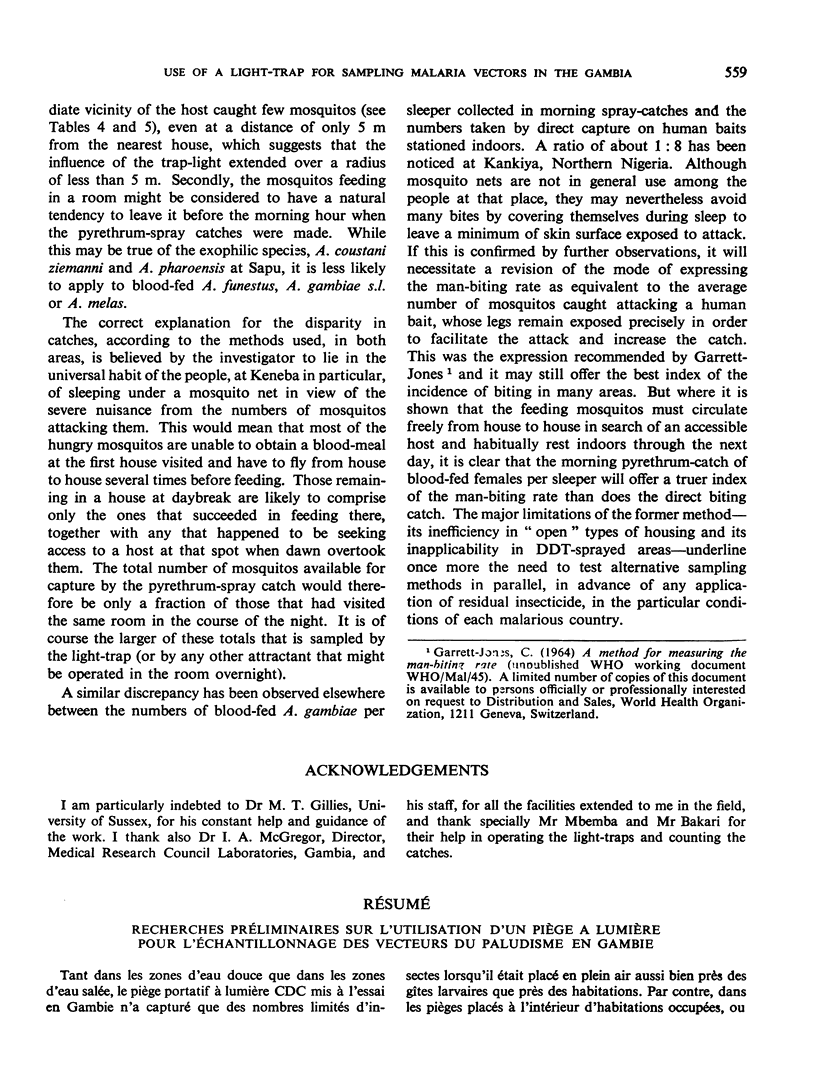
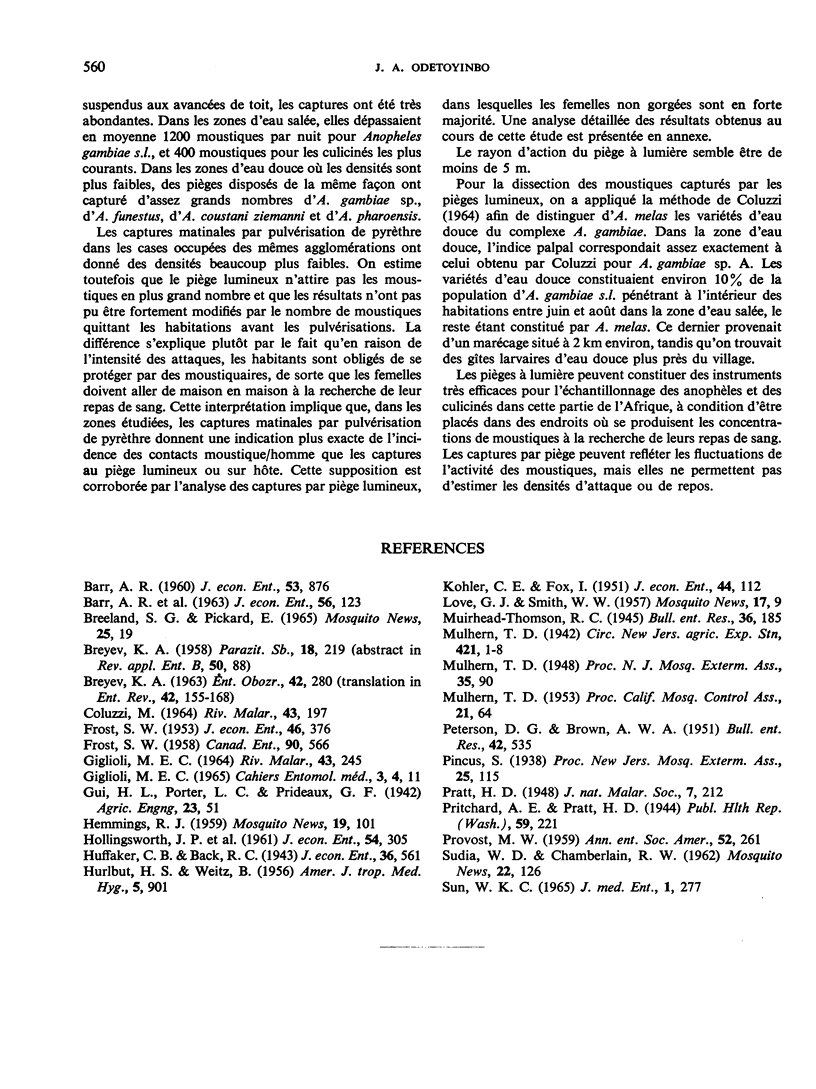
Selected References
These references are in PubMed. This may not be the complete list of references from this article.
- COLUZZI M. MORPHOLOGICAL DIVERGENCES IN THE ANOPHELES GAMBIAE COMPLEX. Riv Malariol. 1964 Dec;43:197–232. [PubMed] [Google Scholar]
- GIGLIOLI M. E. TIDES, SALINITY AND THE BREEDING OF ANOPHELES MELAS (THEOBALD, 1903) DURING THE DRY SEASON IN THE GAMBIA. Riv Malariol. 1964 Dec;43:245–263. [PubMed] [Google Scholar]
- HURLBUT H. S., WEITZ B. Some observations on the bionomics of the common mosquitoes of the Nile Delta. Am J Trop Med Hyg. 1956 Sep;5(5):901–908. doi: 10.4269/ajtmh.1956.5.901. [DOI] [PubMed] [Google Scholar]


